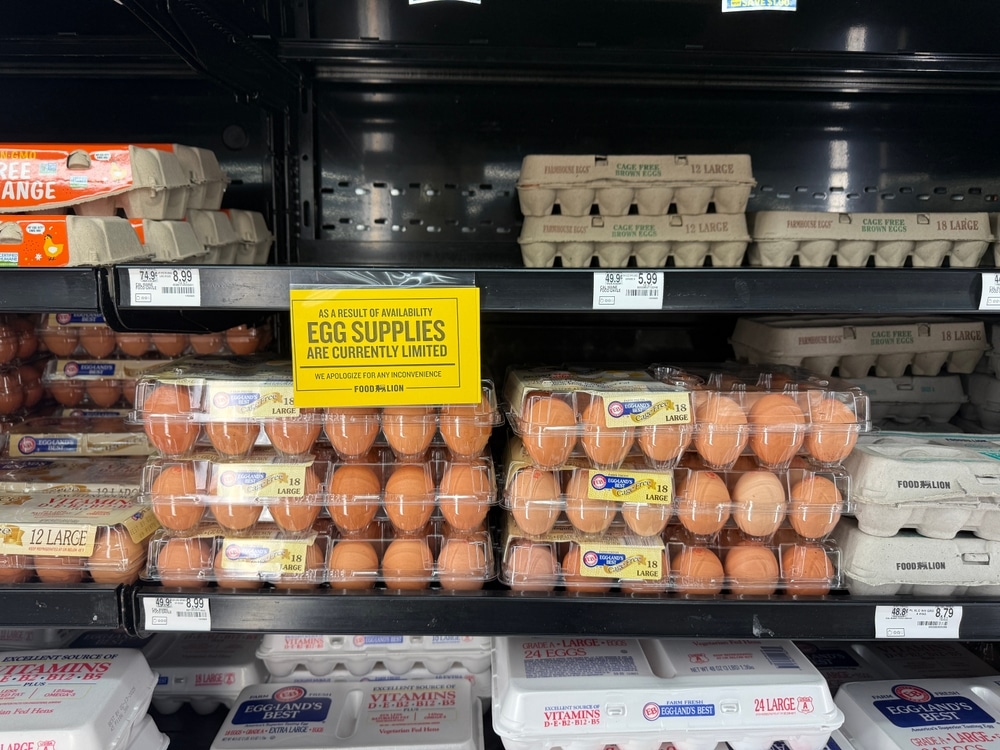Egg prices in the United States have surged to unprecedented levels in early 2025, catching consumers and analysts off guard.
Despite earlier predictions from former President Donald Trump that prices would stabilize and the apparent slowdown of a bird flu outbreak that disrupted poultry production, the cost of eggs has continued to climb.
Multiple factors, including persistent supply chain issues, rising production costs, and market dynamics, are being cited as contributors to this trend. This article explores the current state of egg prices, drawing on reports from various news outlets.
According to the Associated Press, egg prices have reached record highs, with the average cost of a dozen eggs exceeding previous benchmarks.
The report notes that Trump, during his 2024 campaign, repeatedly claimed that his economic policies would lead to lower food prices, including eggs.
However, the reality has been starkly different. The AP points out that while the highly pathogenic avian influenza (HPAI) outbreak, which decimated flocks and constricted egg supply, has shown signs of slowing, prices have not followed the expected downward trajectory.
Instead, wholesale egg prices have spiked, with some regions reporting costs as high as $5 per dozen for large Grade A eggs. CNN echoes this sentiment, highlighting that the egg market has been volatile for over a year.
The network reports that the Midwest, a key egg-producing region, has seen wholesale prices climb to $3.80 per dozen, a significant jump from last year’s figures.
CNN’s analysis suggests that even with fewer reported bird flu cases in early 2025, the cumulative impact of prior flock losses continues to strain supply.
Additionally, feed costs, which account for a substantial portion of egg production expenses, have risen due to global grain market fluctuations. These costs are being passed on to consumers, driving retail prices higher.
The Wall Street Journal provides a deeper dive into the economic factors at play. The paper notes that labor shortages in the poultry industry, coupled with increased energy costs for maintaining climate-controlled hen houses, have added pressure on producers.
The Journal also points out that consumer demand for eggs remains strong, particularly as a relatively affordable protein source compared to meat.
This demand, combined with constrained supply, has created a perfect storm for price increases. The report quotes an industry analyst who warns that prices may not stabilize until mid-2025, assuming no further disruptions.
Fox News takes a slightly different angle, emphasizing the role of regulatory and environmental factors.
The outlet reports that some producers are grappling with stricter animal welfare standards, such as cage-free mandates in states like California, which require costly infrastructure upgrades.
These regulations, while aimed at improving hen conditions, have increased production costs, contributing to higher prices.
Fox also notes that Trump’s supporters have expressed frustration on social media, arguing that the Biden administration’s economic policies failed to address inflation in food markets, including eggs.
The BBC offers an international perspective, noting that the U.S. is not alone in facing egg price hikes. In Europe, similar pressures from avian flu and rising energy costs have pushed prices upward, though the U.S. market appears particularly hard-hit.
The BBC cites data from the U.S. Bureau of Labor Statistics showing that egg prices rose by nearly 30% year-over-year through March 2025, outpacing general food inflation.
The report suggests that global supply chain challenges, including shipping delays for feed and packaging materials, are exacerbating the issue.
Bloomberg adds a market-oriented lens, pointing to speculative trading in agricultural commodities as a potential factor. The outlet reports that futures contracts for eggs have seen increased activity, with traders betting on continued shortages.
This financialization of the egg market, Bloomberg argues, may be amplifying price swings beyond what supply and demand alone would dictate.
The report also highlights that large grocery chains have been slow to absorb cost increases, passing them directly to consumers, which has fueled public discontent.
Public reaction, as reflected in posts on X, shows a mix of frustration and skepticism. Some users attribute the price surge to corporate greed, while others see it as a continuation of broader inflationary trends. However, these sentiments, while capturing the public mood, remain inconclusive without further evidence.










